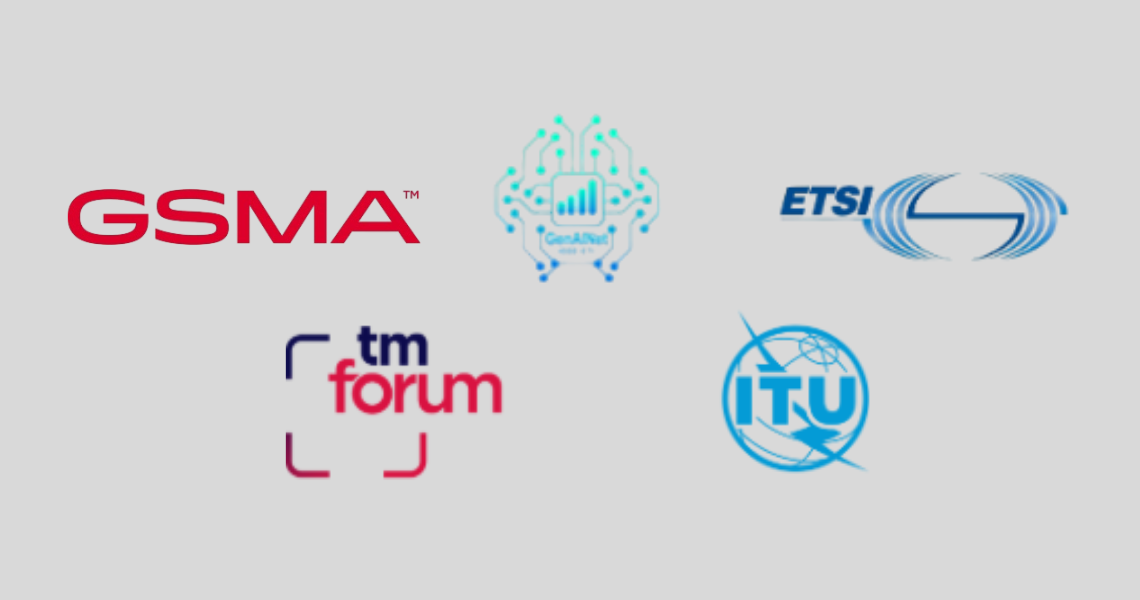Supported by GSMA, ETSI, IEEE GenAINet, ITU and TM Forum, the new initiative invites telco innovators to develop LLMs for root cause analysis of network faults
The GSMA has announced its support for The AI Telco Troubleshooting Challenge which launched today in collaboration with ETSI, IEEE GenAINet, ITU and TM Forum. The new challenge calls on telecom operators, AI researchers and startups to submit advanced large language models (LLMs) that can perform root cause analysis (RCA) on telecoms network faults. Network faults remain one of the most persistent and costly challenges facing the telecoms industry, leading to significant financial losses each year.
The new competition invites teams to submit AI models in three categories: Generalisation to New Faults will assess the best performing LLMs for RCA; Small Models at the Edge will evaluate lightweight edge-deployable models; and Explainability & Reasoning will focus on the AI systems that clearly explain their reasoning. Additional categories will include securing edge-cloud deployments and enabling AI services for application developers.
The aim of the challenge is to identify practical solutions that lead to more resilient, efficient and automated networks. The judging criteria for the challenge will evaluate entrants for the accuracy, efficiency, reasoning capability and security considerations of their models. In addition to the lead community partners of ETSI, GSMA, IEEE GenAINet, ITU and TM Forum, The AI Telco Troubleshooting Challenge is supported by headline partners Huawei, InterDigital, NextGCloud, RelationalAI, xFlowResearch and technical advisors from AT&T.
“This challenge addresses some of the most pressing research questions in our industry, such as model generalisation and the efficiency of edge-based AI,” said Dario Sabella, Chair of ETSI MEC (Multi-access Edge Computing). “By providing unparalleled access to specialised data and resources, we are accelerating the adoption of Telco AI. In particular, efficient small language models, suitable for edge AI deployments, will lower the barriers for the AI adoption, making advanced AI solutions more accessible and impactful across the industry.”
“Large Language Models have become instrumental in the pursuit of autonomous, resilient and adaptive networks,” said Prof. Merouane Debbah, General Chair of IEEE GenAINet ETI. “Through this challenge, we are tackling core research and engineering challenges, such as generalisation to unseen network faults, interpretability and edge-efficient AI, that are vital for making AI-native telecom infrastructures a reality. IEEE GenAINet ETI is proud to support this initiative, which serves as a testbed for future-ready innovations across the global telco ecosystem.”
“ITU’s global AI challenges connect innovators with computing resources, datasets, and expert mentors to nurture AI innovation ecosystems worldwide,” said Seizo Onoe, Director of the ITU Telecommunication Standardization Bureau. “Crowdsourcing new solutions and creating conditions for them to scale, our challenges boost business by helping innovations achieve meaningful impact.”
“The future of telecoms depends on the autonomation of network resiliency – shifting from static infrastructure to AI-driven, context-aware, self-optimising networks. TM Forum's AI-Native Blueprint provides the architectural foundation to make this reality, and the AI Telco Troubleshooting Challenge aligns perfectly to support the industry in moving beyond isolated pilots to production-grade resilient autonomation,” said Guy Lupo, AI and Data Mission lead at TM Forum.
The initiative builds on recent breakthroughs in applying AI to network operations, leveraging curated datasets such as TeleLogs and benchmarking frameworks developed by GSMA and its partners under the GSMA Open-Telco LLM Benchmarks community, which includes a leaderboard that highlights how various LLMs perform on telco-specific use cases.
“Network faults cost operators millions annually and root cause analysis is a critical pain point for operators,” said Louis Powell, Director of AI Technologies at GSMA. “By harnessing AI models capable of reasoning and diagnosing unseen faults, the industry can dramatically improve reliability and reduce operational costs. Through this challenge, we aim to accelerate the development of LLMs that combine reasoning, efficiency and scalability.”
“We are encouraged by the upside of this challenge after our team at AT&T fine-tuned a 4-billion-parameter small language model that topped all other evaluated models on the GSMA Open-Telco LLM Benchmarks (TeleLogs RCA task), including frontier models such as GPT-5, Claude Sonnet 4.5 and Grok-4,” said Andy Markus, Chief Data Officer at AT&T. “This challenge has the right mix of an important business problem and a technical opportunity, and we welcome the industry’s collaboration to take it to the next level.”
The AI Telco Troubleshooting Challenge is open for submissions on the 28th November and it closes on 1st February 2026, with the winners announced at a dedicated prize-giving session at MWC26 Barcelona.



